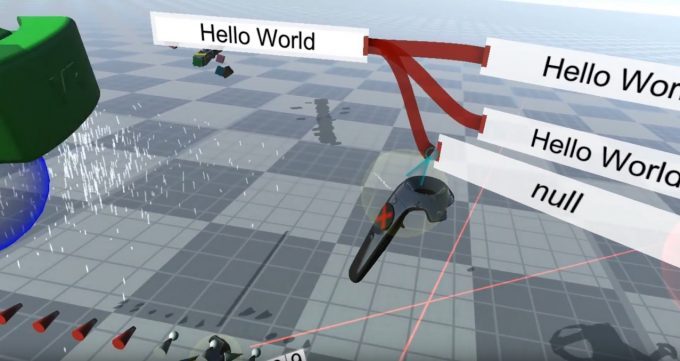Sightline developer Tomáš ‘Frooxius’ Mariančík has released a major update for his collaborative ‘world engine’ NeosVR which adds an incredibly cool multi-user visual programming interface, so you and your friends can code together, entirely within VR.
NeosVR is a collaborative ‘world engine’ that that aims to provide a platform for building the Metaverse, all entirely within virtual reality itself. We took a look at an earlier version of Neos last year, and described it as “A Google Docs for VR world building”.
Well, Mariančík has been beavering away refining NeosVR and has a new alpha version of the software to share with the community with a fairly major new feature, a collaborative visual scripting interface that anyone sharing your virtual NeosVR space can utilise to build complex functionality, all in real-time. This new feature, is called LogiX.
If you’re unfamiliar with visual scripting environments, such as Unreal Engine’s ‘Blueprints’ for example, it’s a way to visually represent objects, actions, properties etc. such that a program can be represented by icons, each with interconnects which indicate logic and program flow. It’s a powerful way to visualise raw data, and allows non programmers to better comprehend what’s behind the code.
“I believe that this is a big leap in our vision for Neos becoming the ‘metaverse engine’ – an actual game engine with core principles designed from the scratch for the metaverse,” Mariančík says, “Everything is still in alpha and very rough, but you can start playing with it if you’re enthusiastic enough, we’d love to see what you’ll build.”
NeosVR‘s LogiX takes that accessibility a step further. By adding the drag-to-connect objects to its multi-user VR environment, a semi physical flow of coding seems to emerge, with your teammates working in parallel to build out certain functions, with actions that impact the virtual world you’re occupying in real time.
LogiX is enabled in the latest Alpha version of NeosVR, which is available for download once you’ve registered over at the project’s site here. And to get you started, the developers have produced a series of LogiX video tutorials too.



